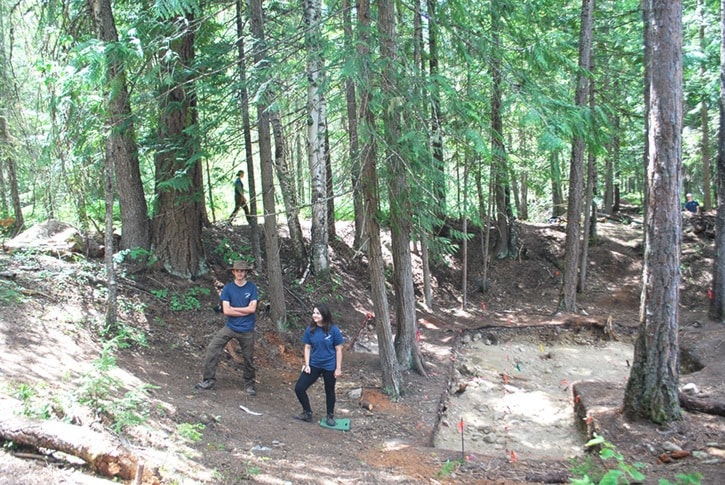Archeologist Nathan Goodale will be at the Revelstoke Museum & Archives on Monday, July 29, to give a talk about the people who used to spend their winters in the Slocan Valley thousands of years ago.
Goodale, a professor at Hamilton College in upstate New York, will speak about he pit houses that he and his team have excavated in Lemon Creek area of the Slocan Valley.
For the third year in a row they invited the public to come learn more about the people who used to spend their winters in the Slocan Valley thousands of years ago.
Professors and organizers Goodale and Alissa Nauman have been opening up their findings to public tours since 2011. In their first year, 150 curious people came to see what was happening, and the number of visitors doubled for their second year.
This year, their third, started at 11 a.m. with a dozen people ready to learn more about the settlement by the creek. On the tour side of the Slocan narrows there are nine pit houses, but there are 23 that have been found on the other side, suggesting a large number of people lived in the Slocan Valley in the past.
The pit houses at Lemon Creek are the last evidence of a big First Nations village, with any others now under water due to the damming of the river.
Following pin flags to the first site, the group was greeted by two students who explained that the large depression in the ground that they were standing in was an old pit house site.
Around 3,100 years ago, pit houses were dug into the ground and the homes then covered with branches. At the first site, two students said the building, a large communal one, would have had a ceiling about 15 metres in height and would have housed around 50 to 75 people.
Radiocarbon dating evidence has revealed an interesting fact: the buildings seem to have been occupied consistently for centuries, then abandoned for roughly 500 years, and then reoccupied. Why isn’t clear, but the archaeologists are working to figure out the mystery.
Another curious finding was that newer pit houses had been dug that were smaller in size and the larger pits left empty, maybe indicating that communal living had been replaced by smaller family units.
The archaeological detective work also involves studying soil samples, bone and rock fragments and the physical makeup of the houses. In one pit, beaver bones and many stone pieces were found in the fire pit, leading the researchers to believe that the house was used to make tools and tan hides.
The houses were tidy, with the only garbage seen in fire pits. The archaeologists suspect waste matter was likely put into the river.
At the last station, three of the 11 archaeology students stood at the edge of nine smaller pits. From their place on the ridge, they explained that the origin of the pits was thought to be either structures by First Nations people built for defence or the result of CP Rail’s excavation during the laying of track. Another mystery waiting to be explored.
The archaeologists will be back next year, digging their work and telling the stories that they have discovered. Don’t miss the chance to learn some local history.
Nathan Goodale will be at the Revelstoke Museum & Archives on Monday, July 29, at 7 p.m.
